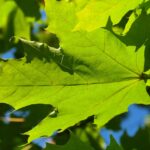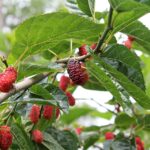Understanding Silver Maple Seed Pods and Growth
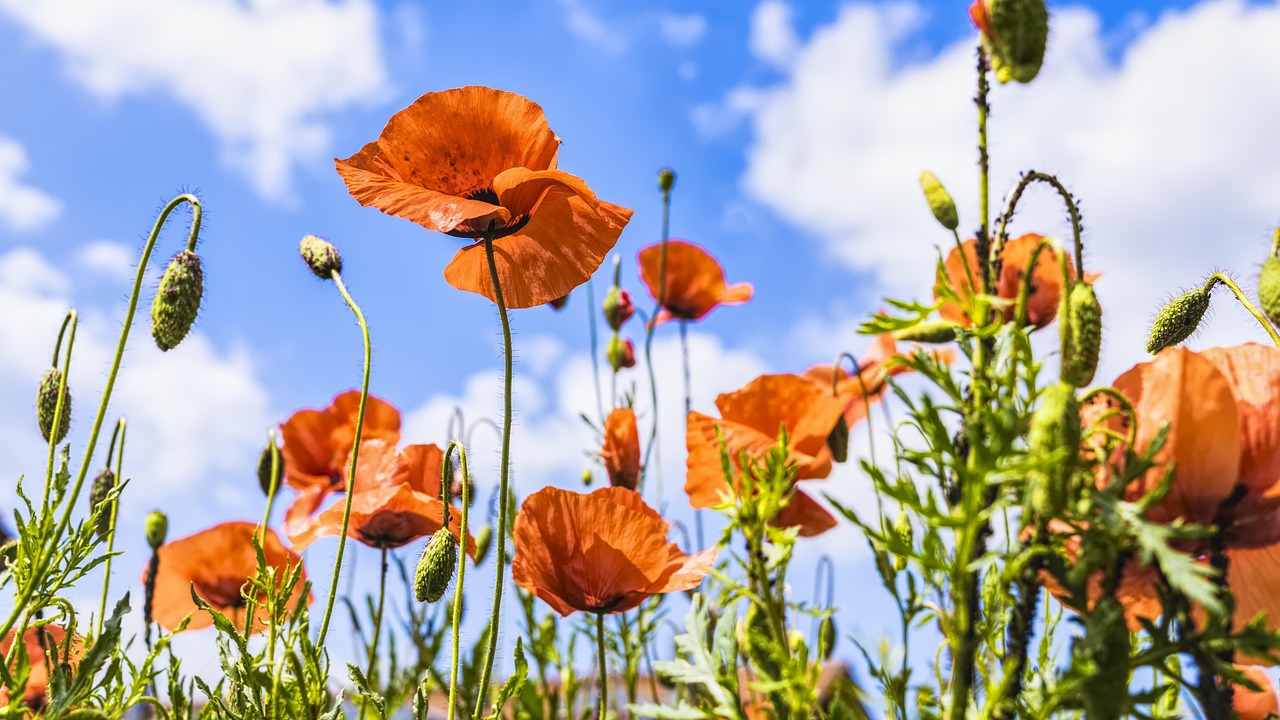
I’ve always been fascinated by the Silver Maple tree, especially its distinctive seed pods. When I see those little ‘helicopters’ spinning down in the spring, I can’t help but wonder about the whole process. This article is my attempt to break down what I’ve learned about silver maple seed pods, from their appearance to their growth and the impact they have.
Key Takeaways
- Silver Maple trees, or Acer saccharinum, are known for their rapid growth and distinctive winged seeds, often called samaras or ‘helicopters’.
- These silver maple seed pods typically develop in early spring after the tree flowers and are ready for dispersal from late spring into early summer.
- The samaras have a unique structure designed for wind dispersal, with wings that help them spin and travel away from the parent tree.
- Silver Maple seeds are viable for a short time and germinate quickly, preferring moist conditions and not tolerating drying out.
- While silver maple seed pods contribute to the tree’s rapid spread and provide quick shade, homeowners should be aware of the tree’s weaker wood and potential for invasive seedlings.
What Is a Silver Maple?
When I first started learning about trees, the Silver Maple, or Acer saccharinum, really caught my eye. It’s a native North American tree, often found in the eastern parts of the United States and Canada. These trees are known for their impressive size, often reaching heights between 50 to 80 feet, and they grow pretty quickly too. One of the most striking features is the underside of its leaves, which have a distinct silvery-white color, giving the tree its name. This contrast is noticeable when the wind rustles through the branches.
Key Characteristics
- Growth Rate: Silver Maples are famous for growing fast, sometimes adding up to 7 feet in a year. This makes them a popular choice if you want shade or a privacy screen relatively quickly.
- Leaves: The leaves are quite large, up to 6 inches long, and deeply lobed with edges that are serrated. They have long stems, and as I mentioned, the underside is a much lighter, silvery color compared to the medium green on top.
- Bark: As the tree matures, its bark turns gray and develops large, flat scales that can sometimes curl away from the trunk. Young trees have smoother, lighter gray bark with small white dots.
- Flowers: Small, greenish-yellow flowers appear in clusters in early spring, usually between February and May, depending on where you are.
Adaptability and Habitat
Silver Maples are quite adaptable and can grow in a variety of soil types. They also tend to prefer moist locations, which is why you often see them growing near rivers or in floodplains. Their tolerance for different conditions makes them a resilient option for many landscapes. It’s interesting to note that while they are adaptable, careful consideration of planting location is important due to their size and potential issues like weak wood and invasive roots, which we’ll get into later. If you’re curious about other maple varieties, the Sugar Maple is another well-known species with different characteristics.
While the rapid growth is a big plus, it’s worth remembering that this fast pace can sometimes lead to weaker wood compared to slower-growing trees. This is something to keep in mind when deciding where to plant one.
Size and Form
These trees typically have a short, broad trunk that branches out relatively low. Unlike some other maples, they don’t usually develop a long, straight trunk, which often makes them less suitable for lumber production. Their mature height can range from 50 to 70 feet, with a similar spread, creating a substantial presence in a landscape.
Identifying Silver Maple Seed Pods
When spring turns into summer, you’ll likely start seeing them everywhere: those little spinning seeds that we all called “helicopters” as kids. These are the seed pods of maple trees, and for the Silver Maple (Acer saccharinum), they’re a pretty distinctive feature. They’re technically called samaras, and they’re designed to catch the wind.
Each samara is essentially a winged seed. For Silver Maples, these wings are usually paired, with two wings joined together. Each wing is quite large, often measuring between 1 to 2.5 inches in length. They have a curved stem, and the wing itself is often lobed, usually with four lobes. The color can vary, but they typically start green and then turn a dry brown as they mature and prepare to fall. Inside each samara is a small nutlet, which holds the actual embryo for a new tree. The paired, winged structure is what allows them to spin and glide through the air, helping the tree spread its seeds far and wide. It’s a pretty neat bit of natural engineering. You can often find these samaras littering lawns and sidewalks after a good wind. If you’re interested in identifying different types of maples, understanding their samara characteristics can be a big help.
Here’s a quick breakdown of what to look for:
- Shape: Two wings joined together, resembling a helicopter rotor.
- Size: Wings typically 1-2.5 inches long.
- Color: Green when developing, turning to brown when ripe.
- Structure: Each wing encloses a small seed or nutlet.
It’s pretty amazing how efficient this system is for reproduction. Each helicopter carries two seeds, doubling its chances of finding a good spot to grow. Plus, the spinning action helps them travel further than if they just dropped straight down. It’s a simple yet effective way for the Silver Maple to ensure its future generations.
The way these seeds spin and fly is a clever adaptation. It helps them escape the shade of the parent tree and find open spaces where they have a better chance of germinating and growing into a new tree. It’s a natural process that’s been perfected over thousands of years.
When Do Silver Maple Seed Pods Develop and Disperse?
When Silver Maple Seed Pods Appear
I’ve noticed that the silver maple tree seed pods, those familiar “helicopters,” start to form not long after the tree flowers in early spring. The pollination process, which is mostly done by wind, kicks things off. Once the female flowers are pollinated, the seeds begin their development within those distinctive winged structures. These samaras are typically ready for dispersal from late spring through early summer.
Seed Pod Development and Maturation
The development timeline can vary a bit depending on the specific weather conditions each year, but generally, you’ll see the seeds growing throughout the spring. They start green and gradually mature. As they ripen, the wings change from green to a dry brown. This color change signals that they are ready to detach from the tree and begin their journey to the ground. The individual seed part, the actual nutlet, is quite small, usually around a quarter-inch in diameter, while the entire samara, including the wing, can be about 1 to 2.5 inches long. It’s fascinating how their structure is perfectly designed for wind dispersal, allowing them to travel quite a distance from the parent tree. If you’re interested in collecting seeds, it’s best to gather them as they start to fall, as their viability decreases if they dry out. For more on seed collection and storage, you might find information on honey locust seed pods helpful, as some principles of seed handling are similar across different tree species.
Dispersal Timing
The actual dispersal of the silver maple tree seed pods usually happens in late spring or early summer. This timing is important because the seeds need to germinate relatively quickly after falling. They don’t typically require any special pre-treatment; fresh seeds can be planted directly into moist soil. Germination can occur within a couple of weeks under the right conditions. This rapid germination is a key part of the silver maple’s strategy for establishing new trees, especially in areas that might experience seasonal moisture.
Seed Pod Anatomy and Dispersal Mechanics
When I look at a Silver Maple seed pod, or samara as it’s technically called, I’m always struck by its clever design. It’s essentially a tiny, aerodynamic marvel built for one purpose: to travel. Each samara consists of two seed-containing wings joined together. These wings aren’t just for show; they’re engineered to catch the wind. As the samara detaches from the tree, the wings cause it to spin, much like a helicopter rotor. This spinning motion slows its descent and allows it to be carried further by air currents.
Anatomy of a Samara
Let’s break down what makes up one of these ‘helicopters’:
- Seed Case: At the center where the two wings meet, there’s a small, hardened casing. This is where the actual maple seed, the embryo of a future tree, is protected. It’s usually quite small, often less than a quarter-inch in diameter.
- Wings: These are the most prominent features. For a Silver Maple, the wings are typically 1 to 2.5 inches long. They are often lobed, with each wing having about four lobes that converge at the seed case. The shape and size of these wings are key to their dispersal.
- Stem: A short, curved stem attaches the samara to the branch. This stem breaks when the seed is ready to fall.
Dispersal Mechanics
The way these samaras travel is pretty neat. Once they mature and detach from the parent tree, usually in late spring or early summer, they begin their aerial journey. The spinning action is critical. It helps them to glide and drift, covering distances away from the crowded base of the parent tree. This dispersal is vital for the survival and spread of angiosperms, giving the seeds a chance to find suitable spots to germinate without immediate competition. Strong winds can carry these samaras hundreds of yards, significantly expanding the potential reach of the Silver Maple. Sometimes, even snowmelt can help move them to new locations.
The design of the samara is a perfect example of natural engineering, prioritizing efficient travel and a chance for the seed to establish itself in a new environment. It’s a simple yet effective strategy for reproduction.
While wind is the primary agent, animals can also play a role. Though less common for Silver Maples compared to some other trees, birds and small mammals might occasionally carry them, especially if they are attracted to the seeds themselves. However, the primary method I observe is the wind carrying them off. Collecting these seeds is best done quickly after they fall, as they lose viability if they dry out. If you’re interested in collecting them, you might find resources on how to save maple tree seeds helpful.
Seed Viability and Immediate Germination Behavior
Seed Viability and Immediate Germination Behavior
When those silver maple samaras, or ‘helicopters,’ hit the ground, they’re usually ready to go. Unlike some other maple species that need a cold spell to wake them up, silver maple seeds are pretty eager to sprout. They generally don’t require any special treatment, like stratification, to get started. This means if the conditions are right – think moist soil and temperatures between 60°F and 70°F – they can start growing pretty quickly after they fall, often within two to four weeks. It’s important to remember that these seeds don’t like to dry out; keeping them moist is key to their viability. If they dry out, their chances of growing into a new tree drop significantly. I’ve found that collecting them as soon as they start falling is the best approach if I want to try and start new trees myself.
Here’s a quick look at what happens after they land:
- Germination Window: Typically 2 to 4 weeks after dispersal.
- Ideal Temperature: Seeds prefer soil temperatures between 60°F and 70°F.
- Moisture Needs: Consistent moisture is vital; they cannot be allowed to dry out.
The natural tendency for silver maple seeds is to germinate almost immediately if the environment is favorable. This direct germination behavior is a key characteristic that sets them apart from many other maple varieties, which often have dormancy mechanisms that require external triggers like cold stratification to initiate growth. This readiness to sprout makes them quite successful at colonizing new areas quickly when conditions align.
It’s interesting to note that while many maple seeds might need a period of cold to break dormancy, silver maples are often ready to go as soon as they are released. This makes them a bit different when you’re thinking about collecting and planting them. If you’re interested in the viability of these seeds, you can find more information on how seed viability is assessed.
At What Age Do Silver Maples Begin Producing Seed Pods?
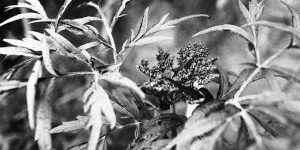
It’s a common question for many homeowners who have a Silver Maple in their yard: when will it start dropping those “helicopters”? Generally, you can expect a Silver Maple to start producing seeds, or samaras, when it reaches a certain maturity. Most Silver Maples are capable of producing seed pods as early as 11 years old. Of course, this can vary a bit depending on the specific growing conditions and the health of the tree.
It’s not just about age, though. The tree needs to be well-established and healthy to put its energy into reproduction. Factors like adequate sunlight, moisture, and good soil play a big role in how quickly a Silver Maple matures and starts producing seeds. If a tree is struggling, it might take longer to reach that reproductive stage.
Here’s a general timeline I’ve observed:
- Young Trees (1-5 years): Focus is on root and canopy development. No seeds yet.
- Adolescent Trees (6-10 years): Growth is rapid, but seed production is unlikely or very minimal.
- Mature Trees (11+ years): Seed production typically begins and will increase as the tree gets older and larger.
It’s interesting to note that while 11 years is a common starting point, some trees might take a bit longer, perhaps up to 15 years, especially if they haven’t had ideal growing conditions. Once they start, though, the production usually becomes more prolific each year. It’s a sign that your tree is settling in and thriving. If you’re looking to collect seeds for propagation, keep an eye on your trees once they pass the decade mark. You might find yourself with a bounty of samaras to work with, perhaps even enough to start a new Silver Maple grove.
The transition from a young sapling to a mature, seed-producing tree is a gradual process. It’s a testament to the tree’s life cycle and its ability to reproduce and spread its lineage. Observing this change over the years is one of the rewarding aspects of having these trees on your property.
Growth Patterns Following Heavy Seed Production
When a Silver Maple tree has a huge seed year, it’s like it’s putting all its energy into making those little ‘helicopters.’ This massive seed production can affect how the tree grows in the short term. Think of it like a plant putting all its resources into making flowers and seeds instead of new leaves or branches.
After a heavy seed year, I’ve noticed that the tree might seem a bit slower to put on new growth in the following season. It’s not that it’s unhealthy, but it’s like it needs a little time to recover and replenish its energy stores. This can sometimes mean slightly less vigorous shoot growth or a less dense canopy for a year or two.
Here’s a general idea of what I’ve observed:
- Reduced Shoot Elongation: New branches might not extend as far as they typically do.
- Slightly Thinner Foliage: The leaves might not be as dense or as large as in years without heavy seeding.
- Focus on Root Development: While above-ground growth might slow a bit, the tree is likely still investing in its root system, which is important for long-term health and future seed production.
It’s important to remember that Silver Maples are generally fast growers, so this slowdown is usually temporary. They are quite resilient. The tree’s ability to bounce back is also influenced by other factors like water availability and soil conditions. For instance, trees on wet sites might show different growth patterns compared to those on drier locations, as competition for resources plays a role.
The energy a tree dedicates to seed production is significant. This expenditure can lead to a temporary shift in growth priorities, with the tree focusing on recovery and replenishment rather than rapid vegetative expansion. This is a natural part of its reproductive cycle.
If you’re trying to grow a Silver Maple from seed, understanding this pattern can help manage expectations. You might see a slightly slower start for seedlings that germinated from a particularly prolific seed year, but they usually catch up. It’s all part of the natural cycle of these adaptable trees, which are known for their rapid growth over their lifespan. You can find more information on the general life cycle of maple trees here.
Environmental Spread
When Silver Maple seed pods, or samaras, are released, they become quite the agents of change across the landscape. Their primary mode of dispersal is wind, and these winged seeds are designed to travel. I’ve noticed that after a good seed year, it’s not uncommon to find young maple sprouts popping up in places you wouldn’t expect, sometimes quite a distance from the parent tree. This is because the samaras can be carried by air currents, especially if they get caught in updrafts, allowing them to achieve long-distance wind dispersal.
This natural spread can have a significant impact:
- New Growth: It leads to the establishment of new Silver Maple trees in various locations, contributing to forest regeneration or, in some cases, unwanted growth in gardens and lawns.
- Competition: These new seedlings can compete with existing vegetation for resources like sunlight, water, and nutrients.
- Landscape Alteration: Over time, this widespread seeding can alter the composition of plant communities, favoring the Silver Maple where conditions are suitable.
It’s interesting to observe how a tree’s reproductive strategy directly influences its presence and dominance in an environment. The sheer volume of seeds produced means that even with a low germination rate, a substantial number of new trees can take root. This prolific seeding is a key factor in the Silver Maple’s ability to colonize new areas quickly.
The effectiveness of the samara’s design, with its wing that allows for spinning descent, is a testament to nature’s efficiency in seed dispersal. This simple yet effective mechanism ensures that the seeds are carried away from the parent tree, reducing competition and increasing the chances of finding a suitable spot to grow.
Wildlife and Urban Impact of Silver Maple Seed Pods
Wildlife Attraction
Silver maple seed pods, often called ‘helicopters,’ play a role in the local ecosystem by providing a food source for various wildlife. Squirrels and chipmunks are particularly fond of these seeds, often seen gathering them in the spring and early summer. Birds also consume the seeds, especially when other food sources are scarce. This attraction can be a positive aspect for those looking to encourage wildlife in their yards. The seeds offer a valuable nutritional boost to many small animals.
Urban Environment Considerations
In urban settings, the impact of silver maple seed pods can be more complex. While they contribute to the green canopy, their prolific seeding can lead to numerous volunteer saplings sprouting in lawns, gardens, and even cracks in pavement. This can be a nuisance for homeowners and city maintenance crews alike, requiring regular cleanup and weeding to prevent overcrowding and potential damage to infrastructure. The rapid growth of silver maples also means their shallow, aggressive root systems can interfere with sidewalks, driveways, and underground utilities. Managing these aspects is key to enjoying the benefits of these trees in a city environment. For instance, understanding how to manage the spread of these seeds can help maintain the aesthetic of your urban greening spaces.
Seed Pod Management
Dealing with the sheer volume of seed pods can be a challenge. Here are a few approaches I’ve considered:
- Early Collection: Gathering the ‘helicopters’ before they fully mature and disperse can reduce the number of new seedlings. This is labor-intensive but effective for controlling spread in a specific area.
- Mulching: Applying a thick layer of mulch around the base of the tree can help suppress germination of fallen seeds.
- Acceptance and Management: Sometimes, the most practical approach is to accept the natural seeding process and manage the resulting saplings through regular mowing or targeted removal. This is often the most realistic strategy for larger properties or public spaces.
The rapid growth and prolific seeding of silver maples mean that careful planning is needed when planting them in urban or suburban areas. Their benefits are significant, but potential drawbacks related to mess and root systems need to be addressed proactively.
Ideal Growing Conditions for Silver Maple from Seed Pods
When I’m looking to get a Silver Maple started from one of those helicopter seeds, I always think about what conditions it needs to get going. It’s not super complicated, but getting a few things right makes a big difference.
Sunlight Needs
These trees really do best with plenty of sun. I aim for a spot that gets at least six hours of direct sunlight every day. If they don’t get enough sun, they tend to get a bit leggy and don’t form as nice a shape. It’s like they’re reaching for the light, which isn’t always the best look.
Soil and Moisture
Silver Maples aren’t too picky about soil type, but they do like it to stay moist. Clay, loam, or silt soil works fine, as long as it doesn’t dry out completely. They can even handle areas that get flooded sometimes, which is pretty neat. I’ve seen them do well in places that stay damp year-round.
Germination Environment
Interestingly, Silver Maple seeds don’t need any special treatment before planting. You can just pop them into moist soil right after they fall. They usually sprout within a couple of weeks if the temperature is right, somewhere between 60°F and 70°F. It’s pretty amazing how quickly they can get going.
Planting the seeds directly into the ground where you want the tree to grow is often the simplest approach. Just make sure the spot has good drainage and gets enough sun.
Early Growth Support
For the best start, I make sure the soil drains well. Seedlings can get stunted if the soil stays too wet. With good sun and moist, well-draining soil, a seedling can grow quite a bit in its first year, sometimes up to three feet tall. Keeping weeds down also helps a lot, as they can really compete with young trees for light and nutrients. If you’re thinking about starting other trees from seed, like a hackberry, the process can be a bit different, often requiring stratification. hackberry tree
Key Factors for Success
- Sunlight: Full sun is ideal for a well-formed tree.
- Moisture: Consistently moist, but well-draining soil.
- Weed Control: Keep the area around young seedlings clear.
- Planting Time: Fresh seeds can be planted as soon as they fall in late spring or early summer.
Establishing Seedlings from Samaras
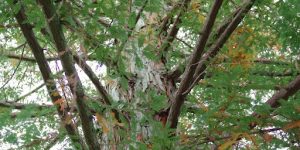
So, you’ve got some silver maple samaras, those helicopter seeds, and you’re thinking about starting a new tree. That’s pretty cool! Getting them to sprout and grow into healthy saplings isn’t too complicated, but there are a few things I’ve learned that help.
First off, timing is key. While some maples need a cold spell to get going, silver maples are a bit more straightforward. I’ve found that planting them in moist, sunny soil in late spring or early summer works best. They might not pop up right away, but give them time.
Preparing the Samaras
Before you even think about planting, it’s a good idea to check your seeds. Not all of them will be viable, meaning they won’t grow. You can do a simple float test: put the samaras in water. The ones that sink are usually good to go, while the ones that float might be duds. I usually toss the floaters.
Planting the Seeds
When it comes to planting, I usually aim for a spot that gets plenty of sun and has soil that drains well. Constantly wet ground can stunt their growth, which is something I learned the hard way. I just press the seeds into the soil, maybe about half an inch deep, and then give them a good watering.
Here’s a quick rundown of what I do:
- Check viability: Use the float test to pick the best seeds.
- Choose a good spot: Full sun and well-draining soil are ideal.
- Plant shallowly: Press seeds about half an inch into the soil.
- Water gently: Keep the soil consistently moist, but not waterlogged.
Early Care and Growth
Once they’re in the ground, keeping the soil moist is the next big thing. I check them regularly, especially when it’s dry out. If you’re lucky, you’ll see sprouts within a few weeks.
The first year is really important for getting these young trees established. Providing consistent moisture and making sure they aren’t being choked out by weeds will make a huge difference in how tall they get. I’ve seen seedlings go from a foot tall to almost three feet in their first year with good care.
If you’re planting in the fall, remember that maple trees are best planted in cooler months, either in spring after the last frost or in early fall, at least six weeks before the first hard freeze. This gives them a chance to settle in before winter hits. It’s a bit of a waiting game sometimes, but seeing those first tiny leaves emerge is always a win. You can find more information on planting maple trees at maple tree planting.
Challenges with Silver Maple Seedlings
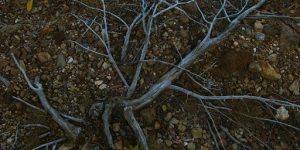
Weak Wood and Branch Breakage
One of the main issues I’ve noticed with silver maples, especially when they’re young and growing fast, is their wood. It’s just not as strong as some other trees. This means they’re more prone to breaking, particularly when we get strong winds or a heavy snow load. I’ve seen branches snap off, and it makes a real mess. It’s something to think about if you’re planting one near a house or a place where people gather. You can’t really change the wood itself, but regular pruning can help manage the tree’s structure and hopefully reduce the chances of big branches coming down. It’s a good idea to keep an eye on the tree’s health and trim it strategically.
Invasive Root Systems
Then there are the roots. Silver maples are notorious for their aggressive, shallow root systems. These roots can spread out quite a bit, and they often cause problems for things like sidewalks, driveways, and even foundations. I’ve heard stories of people having to repair their concrete because the roots pushed it up. It’s really important to avoid planting these trees too close to any structures. If you’re thinking about putting one in your yard, make sure you give it plenty of space. Planting them away from your home is a smart move to prevent future headaches. You can find more information on proper tree placement at Weaver Family Farms Nursery.
Managing Seedling Proliferation
Beyond the wood and roots, there’s the sheer number of seedlings that pop up everywhere from those samaras. If you’re not careful, your yard can quickly become a nursery for tiny silver maples. This can be a nuisance if you like a tidy yard. Regular mowing usually takes care of most of them, but if you want to be thorough, you might have to do some manual removal. It’s all about keeping up with the tree’s natural tendencies.
Managing Silver Maple Seed Pods and Supporting Healthy Growth
Dealing with the abundance of silver maple seed pods, often called “helicopters,” is a common task for anyone with these trees. While they are a sign of a healthy, mature tree, they can also lead to a lot of volunteer seedlings popping up where you might not want them. Proactive management is key to keeping your landscape tidy and your silver maple thriving.
Cleanup Strategies
- Regular Sweeping/Raking: Especially during the peak seed drop in late spring and early summer, a good sweep or rake of your lawn and garden beds can collect most of the samaras before they have a chance to sprout.
- Mowing: For lawns, regular mowing will chop up the seeds, preventing germination. It’s a simple way to manage them without much extra effort.
- Leaf Blower Use: A leaf blower can be surprisingly effective at gathering seeds into piles for easier collection, particularly from patios, driveways, and decks.
Controlling Volunteer Seedlings
Silver maple seeds germinate readily, so you’ll likely see small seedlings appear in your garden beds or lawn. Here’s how I handle them:
- Manual Removal: For small numbers, simply pulling them out by hand is the easiest method. Their roots are usually shallow at this stage.
- Mowing: As mentioned, regular mowing will take care of seedlings in the lawn.
- Mulching: Applying a thick layer of mulch in garden beds can suppress germination and make it harder for any seedlings that do sprout to establish.
It’s important to remember that silver maples are quite adaptable. If you’re trying to grow other plants nearby, the silver maple’s vigorous growth and tendency to spread can sometimes be a challenge. Being mindful of this competition can help ensure your other plants get the resources they need.
Pruning for Health and Structure
While not directly related to seed pods, proper pruning supports the overall health of your silver maple, which in turn can influence its vigor and seed production. Pruning in late winter or early spring, before new growth starts, is generally recommended. Focus on removing dead, damaged, or crossing branches. This helps maintain the tree’s structure and can reduce the number of weak limbs that might break in storms, contributing to the overall mess.
Planting Considerations
If you’re planting a silver maple, think about where you place it. Choosing a spot with plenty of space, away from structures, sidewalks, and septic systems, can prevent future problems with roots and falling debris. Understanding the tree’s growth habits, like its rapid growth rate and shallow root system, is part of responsible tree care.
When to Seek Professional Help
For larger trees, or if you’re concerned about the structural integrity of your silver maple, it’s always a good idea to consult with a certified arborist. They can assess the tree’s health, recommend specific pruning strategies, and help manage any potential issues before they become serious problems.
Dealing with silver maple seed pods can be a bit messy, but it’s also a sign of a healthy tree. If you’re looking for ways to manage them or want to ensure your trees are growing strong, we can help. Visit our website to learn more about tree care and get a free quote for our services!
Frequently Asked Questions
How fast do Silver Maples grow, and how tall do they typically get?
I’ve noticed that Silver Maple trees grow very quickly, often adding several feet in height each year. This rapid growth means they can get quite large, usually reaching between 50 to 70 feet tall. It’s one of the main reasons people choose them if they want shade or a larger presence in their yard fairly fast.
Can I do anything to make the wood of Silver Maples stronger?
While I can’t change the natural strength of the wood, I’ve found that regular pruning helps a lot. By keeping the tree healthy and trimming it correctly, I can reduce the chances of branches breaking, especially when there’s bad weather like strong winds or heavy snow.
How can I manage the mess that comes from falling branches and seeds?
Dealing with the mess from falling branches and seeds is mostly about keeping up with yard work. I make sure to clean up fallen leaves and seeds promptly. I also remove any new baby trees that sprout where I don’t want them. Planting the tree in a spot where its natural tendencies are less of a problem also helps cut down on the work.
What are the best conditions for growing a Silver Maple from seed?
Silver Maples are very adaptable and can grow in many different types of soil and climates. They do best in full sun, meaning at least six hours of direct sunlight daily, and they really like moist soil. They can even handle areas that sometimes flood.
When do Silver Maple seed pods, or ‘helicopters,’ appear and fall?
I’ve observed that Silver Maple seeds, which we often call ‘helicopters,’ are ready to spread in late spring or early summer. Once they fall, they need to be planted quickly because they don’t stay good for very long if they dry out. I usually just stick them into moist soil.
At what age do Silver Maples typically start producing seed pods?
I’ve learned that Silver Maple trees can start producing seeds when they are about 11 years old. It’s quite a young age for a tree to begin this process.
What is the structure of a Silver Maple seed pod, and how does it help the seed travel?
The seeds, or samaras, have a unique shape with two wings that help them spin and fly through the air. This design allows the wind to carry them far away from the parent tree, helping the species spread to new areas. Each seed has a small, dark nutlet inside that holds the actual embryo for a new tree.
How long does it take for Silver Maple seeds to sprout, and how should I care for the young seedlings?
I’ve found that Silver Maple seeds usually sprout within a couple of weeks if planted in moist soil. For the best start, seedlings need full sun and soil that drains well, even though the parent trees like moisture. This helps them grow strong and tall, sometimes reaching up to 3 feet in their first year.


